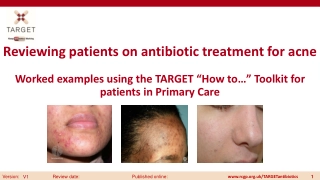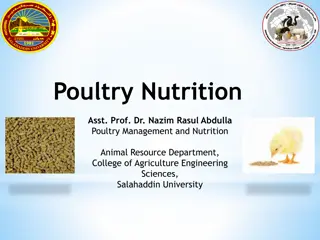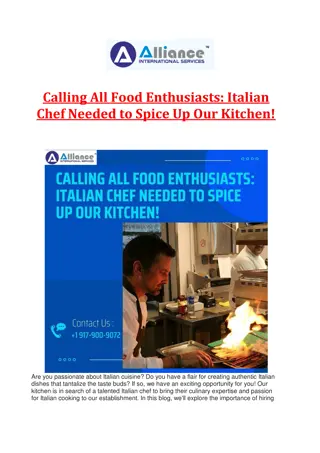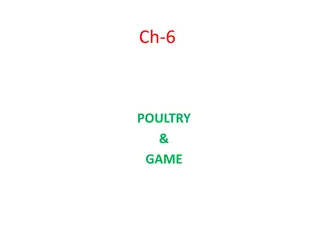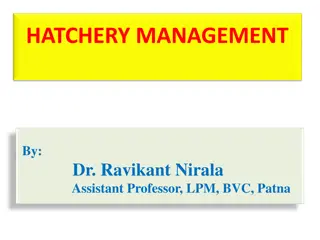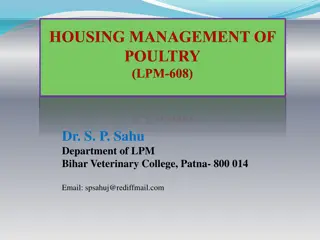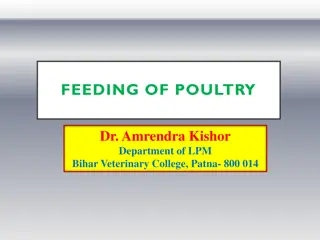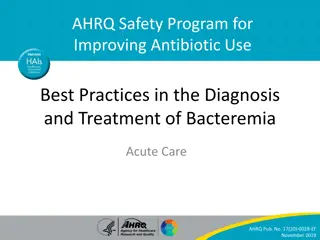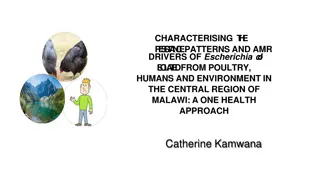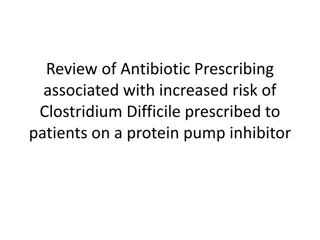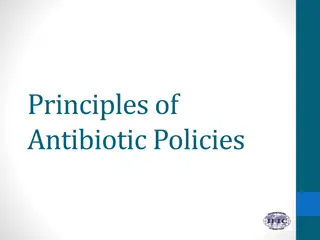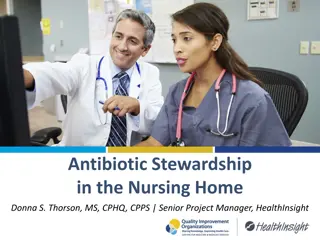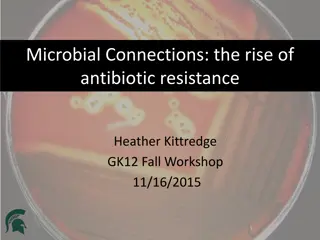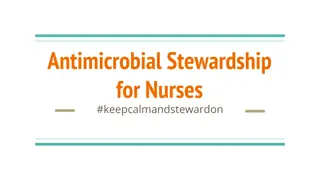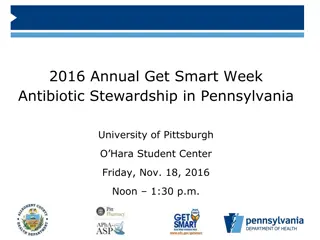Successful Reduction of Antibiotic Usage in Italian Poultry Sector
Italian poultry industry has effectively reduced antibiotic use by implementing proactive strategies and a science-based plan. The approach focuses on prevention, sustainable farming practices, and targeted therapies, leading to a significant reduction in antibiotic usage. Key pillars and commitments support the industry's commitment to a preventive approach and continuous improvement in antibiotic stewardship. Data from 2015-2022 shows impressive reductions in antibiotic consumption, achieving targets ahead of schedule.
Download Presentation

Please find below an Image/Link to download the presentation.
The content on the website is provided AS IS for your information and personal use only. It may not be sold, licensed, or shared on other websites without obtaining consent from the author.If you encounter any issues during the download, it is possible that the publisher has removed the file from their server.
You are allowed to download the files provided on this website for personal or commercial use, subject to the condition that they are used lawfully. All files are the property of their respective owners.
The content on the website is provided AS IS for your information and personal use only. It may not be sold, licensed, or shared on other websites without obtaining consent from the author.
E N D
Presentation Transcript
ANTIBIOTICS REDUCTION IN THE ITALIAN POULTRY SECTOR
Given the widespread consumption of antibiotics in both humans and animals, we decided to be proactive and to be part of the SOLUTION The poultry industry has successfully implemented strategies to dramatically reduce the use of ANTIBIOTICS POSITION We built a voluntary and science-based plan to REDUCE THE USE OF ANTIBIOTICS IN LIVESTOCK farms, unique in the Italian livestock sector PREVENTION throughout the whole and fully integrated supply chain APPROACH
THE PILLARS 01 02 03 04 05 Healthy and resistant bacteria-free breeders Sustainable farming environment Nutritional aspects and water quality Targeted and appropriate therapies in case of diseases Improvement in structures and management COMMITMENTS Develop and consolidate a preventive approach Ban for antibiotic prophylaxis in hatchery and farming Ban for colistin in broilers and only injectable use for turkeys (2017) Respect biosecurity and animal welfare Continuous training Ban for Preference for narrow-spectrum antibiotics Cephalosporins of 3rd and 4th generation (2009) Use of CIAs as a last resort
RESULTS 2015-2022 mg of active ingredient antibiotics /kg live weight per annum BROILER TURKEY 2015 20,09 31,12 TARGET ACHIEVED 2 YEARS IN ADVANCE 2016 13,78 23,01 2017 7,46 16 2018 2,61 10,7 2019 - electronic receipt started in Italy: official data collected by the Ministry of Health in the Classyfarm system, using the methodology DDDVET IT (Italian daily dose) 2021 / 2022 0,7 2,57 -96% -92%
REDUCTION FOR SINGLE ACTIVE INGREDIENT ACTIVE INGREDIENT Amphenicols Aminoglycosides Fluoroquinolone Other Quinolones Lincosamides Macrolides Penicillin Polymyxins Sulfonamides Tetracycline Others Trimethoprim 2011 - 2019 166,69% -31,38% -88,40% -96,80% -78,15% -82,63% -82,01% -99,53% -33,74% -87,55% -100,00% 1,72% under others: 3d and 4d generations cephalosporins - banned before 2011 data collection was certified by a third body (CSQA) until 2019 under the methodology mg active principle/kg live weight Total -79,95%


